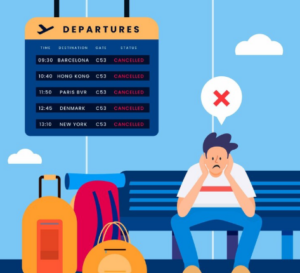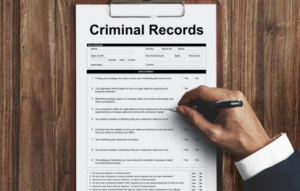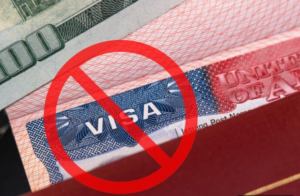Top Red Flags That Cause Visa Rejections

Introduction: Why Red Flags Matter
Thousands of visa applications are refused every year in different nations based on a combination of technical, behavioral, and documentary factors. Regardless of whether one is applying for a tourist, student, or business visa, understanding of what initiates red flags can be the difference between acceptance and rejection. Most applicants lose out not because they are not qualified, but because they take lightly what seems like minor problems.
Knowing the visa denial reasons not only prevents rejection but also increases your chance of reapplication. In this guide, we will explore the most common red flags that result in rejection and how you can avoid them for a successful result.
1. Incomplete or Inconsistent Application Information
One of the most overlooked reasons visa denial occurs even before you set foot inside an embassy—is mistakes in your application. Whether it’s an incorrect date, spelling mismatch, or inconsistency in data across forms and documents, embassies consider them as indicators of negligence or even dishonesty.
Immigration officers match your application against databases and supporting documents. One small inconsistency with your date of birth, employer information, or travel dates will lead to denial.
Also Read: Preventing Fraud in Family-Based Visa Applications
Quick Tip: Double-check and triple-check your forms and employ consistent information throughout all documents. Even formatting inconsistency such as inverted names can create suspicion.
2. Suspicious Travel History or Past Violations

A questionable travel history tends to flag concerns. For example, if you have overstayed a past visa or kept making successive short trips to high-risk or high-immigration nations, you are likely perceived to be an overstay risk.
Further, if you’ve ever been deported or your visa canceled, it greatly affects your current case. The denial of a US visa is usually associated with earlier infractions that are not serious to applicants but are serious to immigration officials.
If you’ve been denied before, you’re required to reveal it accurately. Attempting to conceal previous rejections or immigration infractions is a cause for automatic rejection.
3. Weak Financial Evidence or Inconsistent Sponsorship
Most candidates believe that showing a big bank balance is sufficient, but it is not. Embassies look at where the money comes from and whether your spending habits are consistent with your income. Large deposits immediately before applying may raise red flags.
Also, if your bank statements are unconvincing or your sponsor’s documents look weak, it can result in refusal. This is a serious us visa application denial reason, particularly for B1/B2 and F1 visas.
Supporting documents should contain sources of income, proof of employment, and tax returns that correspond to your lifestyle. Manipulated or forged documents can lead to long-term blacklisting.
Key: Make sure your financial history is verifiable and rationally explained. If your trip is sponsored, your sponsor’s financial history will also be examined.
4. No Strong Ties to Home Country
Embassies always worry about whether you will go back to your home country. If your application does not demonstrate strong professional, family, or economic ties, you could be rejected.
Applicants without a steady job, property ownership, or family responsibilities often fall into the potential immigrant category, especially for U.S., Canada, and Schengen visas. This is one of the most common visa denial reasons across categories.
Showing you’re well-established at home convinces visa officers that you have no incentive to overstay. Students and freelancers especially need to build a narrative that proves they’ll return.
5. Poor Performance in Visa Interview

Despite ideal documentation, your behavior at the visa interview may make or break it. Visa officials are taught to identify spot stress, conflicting answers, or memorized scripts.
Nervousness is not the problem—it’s unclear or inconsistent answers that raise questions. For example, stating that you will tour all big cities in the U.S. without specifying a travel plan indicates lack of preparation. Dressed too casually or too overconfidently, you can also make unfavorable impressions.
One of the major us visa application denial reasons is an improper expression of a purpose to travel or vague, unclear responses during interviews.
6. Knowing Refusal vs. Rejection – Essential Distinction
A lot of applicants wonder: what’s the difference between refusing and rejecting a visa? Refusal of visa is when your application was reviewed but rejected based on certain reasons (e.g., finances, intention, documentation). You can reapply after addressing the issue.
- Rejection of visa is when your application was not approved for processing, usually because you lacked documents, used incorrect forms, or failed to pay fees.
Understanding this distinction allows you to decide the next course of action—whether it’s a quick correction or a complete reapplication.
7. Forged or Fraudulent Documents
Providing forged or altered documents is not only a warning sign—it’s a deal-killer. Applicants often risk sending forged bank statements, forged letters of employment, or forged letters of admission and hoping to go unnoticed. Embassies make thorough background checks, and forging documents usually means permanent ban.
This is a severe visa denial reason and often becomes a lifetime bar for future applications. Your name and details can be flagged in international systems like SEVIS (for U.S. visas) or SIS (for Schengen).
Key Advice: If you’re missing a document, explain it honestly in a cover letter. Do not attempt to fabricate it. Many embassies accept reasonable explanations over dishonest paperwork.
8. Criminal Records or Security Concerns

Any criminal history, however minor, can result in denial—particularly for nations like the U.S., Canada, or Australia. Even if your case was thrown out or disposed of, you are still obliged to report it and submit the attached documents.
Any failure to reveal criminal history will lead to denial of US visa on security reasons. Moreover, affiliations with proscribed organizations or politically exposed backgrounds can raise immigration flags.
Even if you were not convicted, pending cases or unsolved legal problems might stop your application.
Action Step: Always report your entire criminal or legal history. You can still qualify based on the crime and how long ago it occurred.
9. Reapplying After Visa Refusal: Timing and Strategy
A lot of applicants rush to reapply immediately after being denied—without addressing the original issues. Understanding after the refusal of a US visa when to apply is essential.
There’s no fixed wait time for reapplying, but unless you’ve fixed the cause of refusal, applying again won’t help. The system retains your prior rejection data and decision notes.
If your application was rejected on Section 214(b) grounds (nonimmigrant intent), then you will have to prove new circumstances (e.g., promotion at the job, greater connections to your home country) for a subsequent application to qualify.
Tip: Be sure to ask for a written notice of refusal and read it before drafting your us visa reapplication.
10. Visa Rejection Reason and How To Check

Most applicants ask how to check visa rejection reasons after getting a refusal. Consulates usually give a document with the refusal reason code or law section (e.g., 221(g), 214(b), 212(a)).
For U.S. visas, you can also:
- Ask for a Freedom of Information Act (FOIA) report
- Go to the U.S. Department of State website and use your DS-160/CEAC tracking number
- Contact the consulate directly if a 221(g) administrative process was used
Knowing the specific refusal cause is essential in resolving the application and preventing repeated visa denial.
Pro Tip: Keep a copy of your refusal letter—it includes your case number and refusal reasons. This will be useful in reapplication or legal advice.
Ready to Avoid Expensive Mistakes?
Let Passage Law assist you in creating a sound, rejection-proof visa plan. Schedule your consultation now and take the first bold step towards approval.
